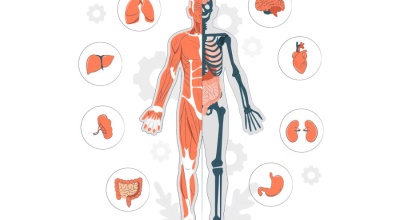Over the last five years weather events and injuries have increased. The largest number of reported injuries resulted from tornadoes, ice storms, and thunderstorms and wind. If you do not have to go outdoors the best advice is to stay inside and curl up with a good movie or book.
Cold Weather Safety
Prepare for a Winter Storm
During extremely cold weather or winter storms, staying warm and safe can be a challenge. Winter storms can bring cold temperatures, power failures, loss of communication services, and icy roads. To keep yourself and your loved ones safe, you should know how to prepare your home and your car before a winter storm hits.
Stay Safe During & After a Winter Storm
Winter storms are dangerous. They can bring cold temperatures, power failures, loss of communication services, and icy roads. This can make being outside dangerous, so you should limit your time outside. Although staying indoors as much as possible can help reduce the risk of car crashes and falls on the ice, you may also face hazards inside your home.
Prevent Hypothermia & Frostbite
Hypothermia (abnormally low body temperature) and frostbite are both dangerous conditions that can happen when a person is exposed to extremely cold temperatures. Stay safe this winter by learning more about hypothermia and frostbite, including who is most at risk, signs and symptoms, and what to do if someone develops hypothermia or frostbite.
Bring Your Pets Indoors
If you have pets, bring them indoors. If you cannot bring them inside, provide adequate shelter to keep them warm and make sure they have access to unfrozen water.
Pets and animals are impacted by emergencies. It is critical to include their needs in your family’s preparedness efforts.
Enjoying the Winter Weather
Avoid Injuries While Enjoying the Winter Weather
Whether you are skiing, snowboarding, sledding or skating, take safety precautions such as learning basic skills and using the appropriate gear for the sport.
Prepare Your Car for Winter
In addition to annual maintenance, here are some tips to winterize your car:
- Test your battery; battery power drops as the temperature drops
- Make sure the cooling system is in good working order
- Have winter tires with a deeper, more flexible tread put on your car
- If using all-season tires, check the tread on your tires and replace if less than 2/32 of an inch
- Check the tire pressure; tire pressure drops as the temperature drops
- Check your wiper blades and replace if needed
- Add wiper fluid rated for -30 degrees
- Keep your gas tank at least half full to avoid gas line freeze
The National Safety Council eliminates preventable deaths at work, in homes and communities, and on the road through leadership, research, education and advocacy.
Treat Frostbite Immediately
Use first aid to help someone who may have hypothermia or frostbite. Online and classroom courses are available at workplaces and other organizations through National Safety Council (NSC). Download the NSC first aid app and you will be ready to give first aid for frostbite, hypothermia and many other emergencies.
Ice Strength and Safety
Always use caution while fishing or recreating on ice.
How can you tell if ice is safe?
There are no guarantees. Always consider ice to be potentially dangerous. You can't judge ice conditions by appearance or thickness alone; many other factors like water depth, size of waterbody, water chemistry, currents, snow cover, age of ice, and local weather conditions impact ice strength.
Ice tips to remember:
- New ice is stronger than old ice. Four inches of clear, newly formed ice may support one person on foot, while a foot or more of old, partially thawed ice may not.
- Ice doesn't freeze uniformly. Continue to check ice conditions frequently as you venture out onto the ice.
- Ice formed over flowing water and currents is often more dangerous. Avoid traveling onto ice-bound rivers and streams, as the currents make ice thickness unpredictable. Many lakes and ponds may contain spring holes and other areas of currents that can create deceptively dangerous thin spots.
Before heading out onto the ice
- Tell someone your plans, including where you are going and when you expect to return.
- Come prepared. Carry a cell phone in case of emergency. Always carry ice picks and rope with you on the ice. In case of emergency, drive the nails into the ice and pull yourself to safety while kicking (see tips for falling in below).
- Wear your life jacket. If you fall in, a life jacket will keep you at the surface and can provide insulation against the effects of cold water.
Ice thickness guidelines
The guidelines below are for clear, blue ice on lakes and ponds. White ice or snow ice is only about half as strong as new clear ice and can be very treacherous. Use an ice chisel, auger, or cordless drill to make a hole in the ice and determine its thickness and condition. Bring a tape measure to check ice thickness at regular intervals.
| Ice Thickness (inches) | Permissible Load (on new clear/blue ice on lakes or ponds) |
| 2" or less | STAY OFF! |
| 4" | Ice fishing or other activities on foot |
| 5" | Snowmobile or ATV |
| 8"–12" | Car or small pickup truck |
| 12"–15" | Medium truck |
If you fall in:
- Don't panic: Call for help if there are people nearby.
- Don't remove winter clothing: Air trapped in your clothes can provide warmth and help you float.
- Turn the direction you came from: Ice you previously walked on should be the safest.
- Place your hands and arms on an unbroken surface and kick your legs: If you have ice picks or a pair of nails, use them to pull yourself up onto the ice while kicking.
- Lie flat and roll away: Once your torso is on firm ice, roll toward thicker ice to distribute your weight.
- Find shelter and get warm: Change out of wet clothing and find warm, dry coverings. If you are in a remote area, get to or start a campfire. Otherwise, get to a car or house. Seek medical advice from your physician for medical attention.
If someone else falls in:
Remember the phrase "Preach-Reach-Throw-Go."
- Preach: Call 911 if you can. Shout to the victim to reassure them help is on the way.
- Reach: If you can safely reach them from shore, extend an object like a rope, jumper cables, tree branch, or ladder to them.
- Throw: Toss one end of a rope or something that will float to the victim.
- Go: If the situation is too dangerous for you to perform a rescue, call 911 or go to find help. Untrained rescuers can become victims themselves.
If a pet falls in:
Do not attempt to rescue the pet, go find help. Well-meaning pet owners can easily become victims themselves when trying to assist their pets. Remember to always keep pets leashed while walking on or near ice.
Video: FAQ What is a Watch
Tornado | Rain and Floods | Earthquakes | Lightning | Volcanoes | Winter Storm
EPAP for Patients - phe.gov
The Emergency Prescription Assistance Program, or EPAP, helps people in a federally-identified disaster area who do not have health insurance get the prescription drugs, vaccinations, medical supplies, and equipment that they need. This program helps people and communities better cope with a disaster and reduces stress on the healthcare system.
People who are eligible for EPAP can file a claim at more than 72,000 retail pharmacies across the United States and its territories for prescription items that were lost, stolen, or destroyed because of a disaster.
If you have questions about using EPAP during a disaster, call the EPAP Hotline at 1-855-793-7470.
Extra Measures for People with Special Needs
- Write down your specific needs, limitations, capabilities, and medications. Keep this list near you always–perhaps in your purse or wallet.
- Find someone nearby (a spouse, roommate, friend, neighbor, relative, or co-worker) who will agree to assist you in case of an emergency. Give him or her a copy of your list. You may also want to provide a spare key to your home, or directions to find a key.
- Keep aware of weather conditions through whatever means are accessible to you. Some options are closed captioning or scrolled warnings on TV, radio bulletins, or call-in weather information lines.
Disaster Safety Plans
Download Emergency Preparedness Checklist
A disaster supplies kit is a collection of basic items your household may need in the event of an emergency.
Make sure your emergency kit is stocked with the items on the checklist below. Most of the items are inexpensive and easy to find, and any one of them could save your life. Headed to the store? Download a printable version to take with you. Once you take a look at the basic items, consider what unique needs your family might have, such as supplies for pets, or seniors.
Checklist on Emergency Preparedness
Additional Emergency Supplies
Consider adding the following items to your emergency supply kit based on your individual needs:
- Prescription medications
- Non-prescription medications such as pain relievers, anti-diarrhea medication, antacids or laxatives
- Glasses and contact lenses solution
- Infant formula, bottles, diapers, wipes, diaper rash cream
- Pet food and extra water for your pet
- Cash or traveler's checks
- Important family documents such as copies of insurance policies, identification and bank account records saved electronically or in a waterproof, portable container
- Sleeping bag or warm blanket for each person
- Complete change of clothing appropriate for your climate and sturdy shoes
- Household chlorine bleach and medicine dropper to disinfect water
- Fire extinguisher
- Matches in a waterproof container
- Feminine supplies and personal hygiene items
- Mess kits, paper cups, plates, paper towels and plastic utensils
- Paper and pencil
- Books, games, puzzles or other activities for children
Maintaining Your Kit
After assembling your kit remember to maintain it so it’s ready when needed:
- Keep canned food in a cool, dry place
- Store boxed food in tightly closed plastic or metal containers
- Replace expired items as needed
- Re-think your needs every year and update your kit as your family’s needs change.
Kit Storage Locations
Since you do not know where you will be when an emergency occurs, prepare supplies for home, work and vehicles.
- Home: Keep this kit in a designated place and have it ready in case you have to leave your home quickly. Make sure all family members know where the kit is kept.
- Work: Be prepared to shelter at work for at least 24 hours. Your work kit should include food, water and other necessities like medicines, as well as comfortable walking shoes, stored in a “grab and go” case.
- Vehicle: In case you are stranded, keep a kit of emergency supplies in your car.
Public Downloads
All items are free to view, share, and download.
Public Downloads - Español (Spanish)
When available, we provide all our content with a Spanish version in our public download section. You can find additional material from sources listed in all our articles.
Download Personal Forms
Download Organ Donation Content
Download People with Special Needs Preparedness Planning Steps, Activities and Videos
Download Severe Weather Educational Fact Sheets, Videos, Coloring and Activity Books
Download Ready Wrigley Activity Books
Educational materials in 23 different languages, including American Sign Language (ASL).
Download Emergency Preparedness Activities
Download Emergency Preparedness Activity Books
Download Emergency Preparedness Coloring Pages
Download Emergency Preparedness Puzzles
Download Emergency Learning Activities
Playlist: Danger Rangers
Seven animal heroes called the "Danger Rangers," their robot Fallbot, and their artificial intelligence called SAVO teach children about safety through examples, such as environmental hazards and unsafe places.












Danger Rangers Fire Safety App
http://www.amazon.com/gp/product/B00FQT22RO
Download our latest Fire Safety App for Apple iOS and Amazon Kindle! Full of games, stories, music videos and full length Danger Ranger episodes.














